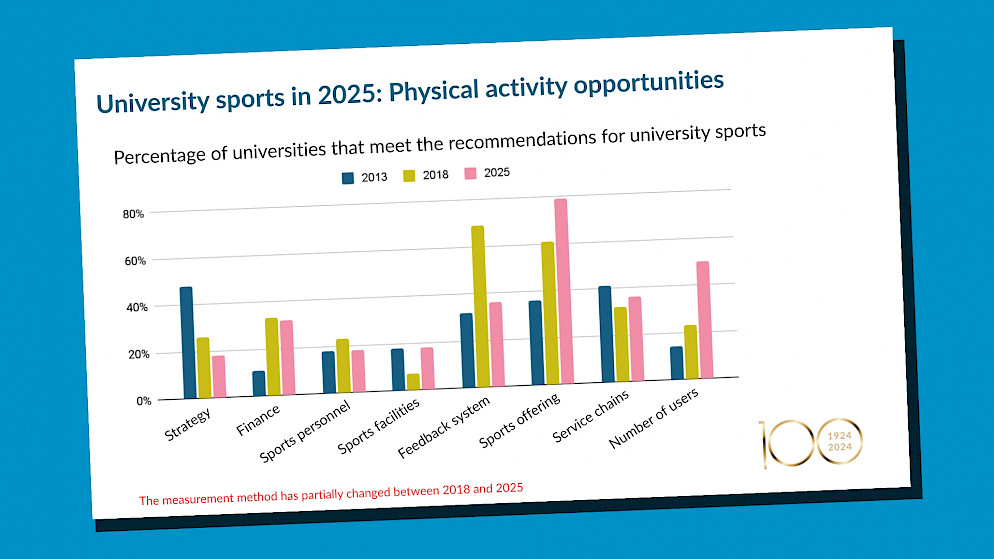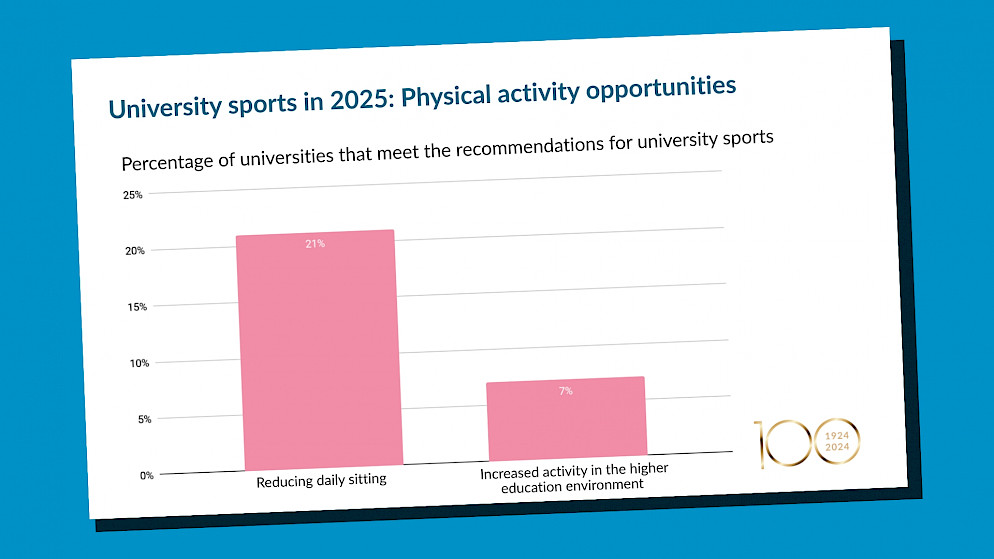The status of university sports in 2025
It is time to assess whether the vision for university sports in 2025 has been achieved.
Since 2011, university sports services have been improved using national recommendations created under the guidance of OLL. Goals pertaining to the entire university community were added to the recommendations in 2018.
When the recommendations were updated, we also created a vision for 2025. We wanted all universities to have a study environment and culture which supports daily physical activity. In our vision, this meant both high-quality sports services and reducing excessive daily sitting and sedentary behaviour. We also wanted university sports to be an important part of the work to promote physical activity among young adults in Finland.
So what is the status of university sports in 2025?
OLL’s Special Advisor for University Sport Anni Liina Ikonen and Senior Special Advisor for University Sport Jussi Ansala have given presentations on the evolving situation a couple of times this spring: at first during the Liikkuva ja oppiva yhteisö seminar in Jyväskylä in April, and later at the network meeting for sports services and board members in charge of sports in Lahti in May. The following points have been taken from these presentations.
The sports services are growing faster than the culture is changing
The implementation of the recommendations for university sports are currently being measured using the electronic Universities on the Move scorecard, which was created by OLL. The measurements carried out in 2013 and 2018 used objective assessments of things like the number of premises and square metres that the sports services have access to. In the scorecard, which was launched in 2022, representatives for the universities assess the implementation in a more subjective way, but in more detail than before. Therefore the comparison shown by the bar chart in figure 1 should be taken with a pinch of salt, but it does give a reliable indication of the direction the changes are going in.

The bar chart on the implementation of the recommendations does not show that the situation as a whole has improved or worsened; instead any changes relate to specific recommendations. One positive aspect is the increase in the number of users, which runs in parallel with the increase in the number of sports offered. This is the result of persevering work by the universities, and particularly their sports staff.
The number of staff members does not, however, seem to have increased at the same rate. The recommendation is that university sports services should employ one full-time employee per 5,000 students. This measurement may, however, be impacted by the more varied approach used in the scorecard compared to previous assessments. Previously we only measured the number of employees in the traditional sports services, but now we are also looking at the multi-professional coordination of increased physical activity and reduced sitting.

Regarding reduced sitting and increasing the physical activity in the entire higher education environment (figure 2) we can expect better results in the near future once the development projects start to take effect. In projects funded by the Government’s Get Finland Moving programme, universities are currently drawing up small and large measures to increase physical activity on campuses, during lectures and in all areas of university life. Reducing sedentary behaviour is all about creating a change in the culture, which requires improving premises and including and engaging the entire community in actions that align with the desired culture.
Progress has been made in university sports
In conclusion it can be noted that when the data on the implementation of the recommendations for university sports are combined with research data on physical activity and sedentary behaviour among students*, we can see a link between the two: the percentage of students who move enough (55%) has increased as the number of sports offered by the sports services has increased. On the other than, the recommendation to reduce sitting has not been achieved to the same degree, and no change worth mentioning has taken place in the amount of sitting (10.5 hours per day).
The vision for university sports will not be achieved in Finland in 2025, but progress has been made, and we have gone forward, like Finnish football in the early 2000s. The work is ongoing and improving both within the traditional sports services and in increased physical activity in the entire university environment. At the same time, the opportunities for student sports are also improved for example through initiatives such as the Finnish Olympic Committee’s quality label for top athlete-friendly higher education institutions.
According to the vision, university sports are an important part of the work promoting a culture of sports and physical activity for young adults. The legislative foundation has been cast into the Universities Act and the operating licences of the universities of applied sciences. OLL and the universities also play an important role in introducing the Studies on the Move programme into the everyday lives of students.
The latest proof of the key role of university sports is the strategy funding aimed at promoting wellbeing and physical activity, which the Ministry of Education and Culture has agreed on with all universities and universities of applied sciences for 2025–2028.
*Physical activity and sedentary behaviour among students are covered in the Finnish Student Health and Wellbeing Survey (THL 2024). OLL’s former Vice President Marika Uusi-Illikainen https://www.oll.fi/en/news-archive/kott-2024-blog/wrote about the results of the study back in January.

You may also be interested in
-
"The Time for a break?" campaign encourages university students and teachers to reduce sitting
Published:This year, the Finnish Student Sports Federation OLL’s annual #BeActive weeks 22.9–3.10 aim to get people to pay attention to taking breaks from sitting while studying. Moving your body while studying improves the ability to study, but students still sit 10.5 hours per day.
-
University sports ambassador wanted for international programme
Published:The International University Sports Federation FISU is looking for students to join their FISU Student Ambassador programme for 2025–2026. The purpose of the programme is to train university sports ambassadors to promote university sports and an active lifestyle at home and abroad.
Read more about article: University sports ambassador wanted for international programme
-
New study shows that students exercise more than before, but there is no reduction in sitting
Published:According to the Finnish Student Health and Wellbeing Survey (KOTT), which was published in November, 55 percent of university students exercise enough according to the physical activity recommendations. Exercise promotion is, however, still needed. Marika Uusi-Illikainen, OLL’s Vice President for 2024, summarises the research results and discusses how student sports can be improved going forward.
Share this page
Page last updated 3.6.2025
